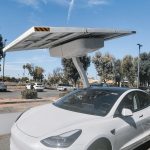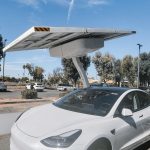Waymo continues to pursue a national presence in autonomous ride-hailing, with its latest expansion targeting Las Vegas, San Diego, and Detroit. By initiating operations with both the Jaguar I-PACE and Zeekr RT vehicles equipped with the sixth-generation Waymo Driver, the company lays additional groundwork for broadening its reach. These efforts come as major urban areas increasingly look to autonomous options for transportation, and as Waymo seeks to address both familiar and more challenging operating environments. While timelines for rider service launches in San Diego and Las Vegas are now outlined, Detroit’s schedule remains open, capturing attention in the automotive capital.
Recent reporting indicates that Waymo’s earlier expansion efforts largely focused on warmer climates, such as Phoenix and Austin, and had yet to delve into markets with heavy snowfall or complex winter conditions. Previous test deployments aligned with public road miles milestones, yet stopped short of offering full robotaxi service in cold-weather cities. Newer information reflects a clear shift toward geographical diversity, setting the stage for new technical challenges and operator learning. Compared to competitors such as Nuro and Zoox, Waymo’s pace and city selection set it apart, especially as Cruise recently withdrew from several markets.
Which Markets Are Next for Waymo’s Robotaxis?
Las Vegas and San Diego are slated to join the company’s active service roster within two years, with San Diego planned for next year and Las Vegas in the summer of 2026. No specific timeline has yet been given for Detroit, though mapping and preliminary vehicle operations have begun. Detroit’s inclusion highlights a strategy to enter cities with unique transportation challenges and underscores Waymo’s ties to the automotive industry.
How Is Waymo Addressing Harsh Weather Conditions?
The company has strengthened its technology to handle environments with snow, ice, and fluctuating weather. Regular deployments in regions like Michigan’s Upper Peninsula, the Sierra Nevada, and Upstate New York serve to acclimate vehicles and refine algorithms for winter conditions. The Waymo Driver utilizes integrated cameras, radar, and lidar sensors, all kept operational by a proprietary cleaning system combining engineering and heating methods.
What Features Distinguish the New Waymo Driver?
The sixth-generation Waymo Driver incorporates AI capable of differentiating among road conditions—such as snow, slush, or ice—and responding accordingly. The system adjusts speed, acceleration, and braking in real-time, using environmental perception and inference from nearby vehicles and obstacles. Waymo emphasizes increased reliability for riders even during inclement weather, explaining,
“Our system can adapt to blocked roads, detours, and changing surface conditions,”
and further outlining,
“We have designed our sensors to keep operating in snow and tough winters.”
Waymo’s expansion places it ahead of various competitors, especially as it targets test programs in cities such as Boston and New York, both of which experience harsh winter weather. While rivals like Zoox and Nuro continue to run limited deployments, Waymo’s experience in high-mileage, real-world autonomy provides key learning opportunities for the entire sector. The active presence in Phoenix, San Francisco, Los Angeles, and Austin has also contributed to Waymo’s milestone of over 100 million fully autonomous miles and more than 10 million paid rides delivered.
Waymo’s strategy of targeting new cities while investing in weather-adaptive technology stands out as the autonomous vehicle market matures. For readers interested in public transit and the evolving mobility landscape, understanding the deployment cadence and technical roadmap of leaders like Waymo can yield insight into when self-driving services may arrive in their area—and how prepared they are to serve riders reliably in all seasons. Continued innovation in sensor upkeep and decision-making AI remains pivotal for wider adoption, especially where environmental conditions were once a limiting factor. Stakeholders following these developments should assess not only operational expansions, but also how companies address the specific obstacles of each city, including weather and traffic patterns.










